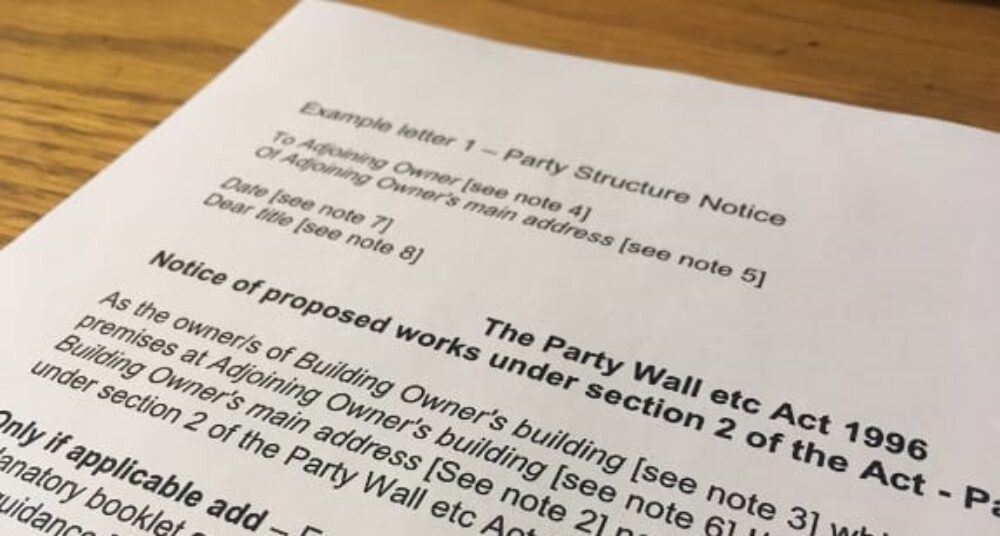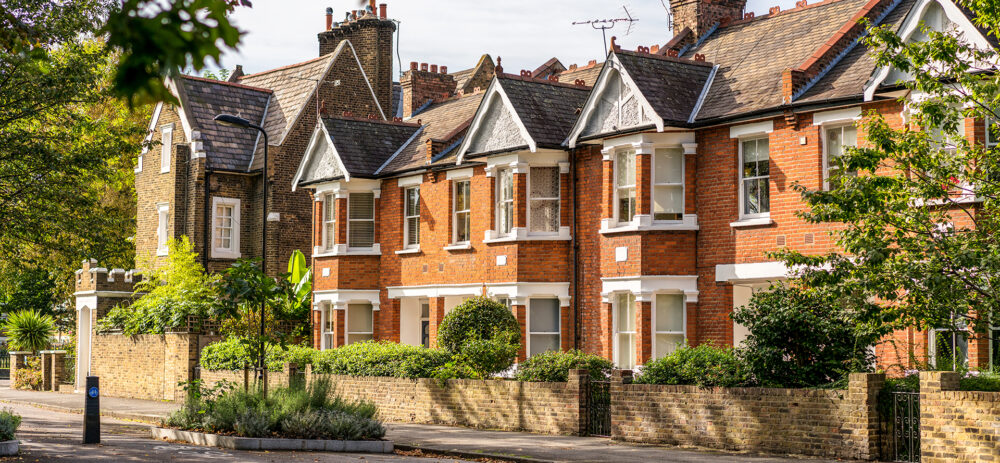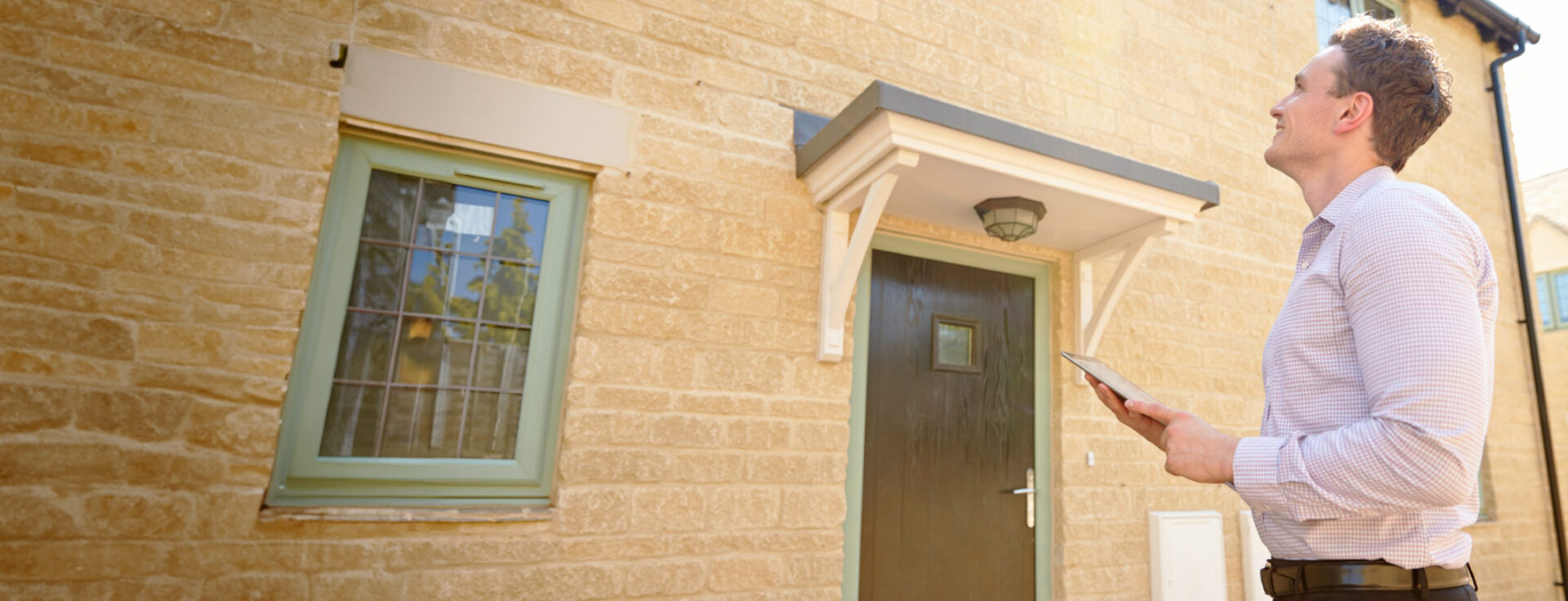
WHEN SHOULD YOU HIRE A PARTY WALL SURVEYOR IN EAST LONDON?
The first step in any party wall procedure is for the party proposing the works to notify any affected adjoining owners.
Works falling within the scope of the Act break down into three categories:
- Work that directly affects a party structure, such as inserting steels or increasing the height of a party wall to facilitate a loft conversion. Other examples include removing a chimney breast bonded into the party wall and underpinning.
- Excavating within 3.0m of an adjoining or shared structure and to a greater depth than the base of the foundations of that structure. A typical example would be the foundations to a rear extension. Where the excavation is particularly deep, such as with piled foundations, that distance increases to 6.0m.
- Constructing a new wall either up to or astride the boundary between two properties. The most common example is a rear extension with a wall at the boundary, but garden walls are also included.
Our party wall surveyors have the combination of technical and legal knowledge required to ensure that notices are valid and that the response is as favourable as possible.
How Can Our Party Wall Surveyors in East London Help You?
Our surveyors remain available to assist as necessary following the service of notices. The form that assistance takes depends upon the adjoining owner’s response.

The Building Owner (The Party Proposing the Works)
The adjoining owner will have three options when responding to a notice;
- to consent.
- to dissent and appoint the same surveyor as you.
- to dissent and appoint a separate surveyor. The building owner is responsible for the surveyors’ reasonable fees.
Having the notices prepared by one of our specialist party wall surveyors will increase the chances of the adjoining owner selecting one of the first two options, preventing you from paying for two surveyors.
To improve the chances of consent, we recommend including an offer to pay for a schedule of condition when serving notice.
A schedule of condition is a detailed written record of those parts of the adjoining owner’s property which are at risk from the proposed works, together with supporting photographs.
Having such a record on file will be very useful should there be a damage claim either during or following the works.
In our experience, adjoining owners take much more notice of the condition of their property during neighbouring works and often assume that any cracks they see are new.

The Adjoining Owner (The Neighbours of the Party Proposing Works)
How you respond to a party wall notice depends on how concerned you are about the proposals.
If the works are relatively straightforward and properly described in the notice pack, you may decide to consent.
If you decide to consent, we recommend that the condition of the parts of your property which are at risk from the proposed works are recorded in a schedule of condition in case you suspect damage once the works commence.
If you are concerned about the works, and the building owner does not alleviate those concerns, you can appoint your own surveyor, either the same one as the building owner or a surveyor of your choice.
Our team of specialist party wall surveyors in East London are very experienced in reducing the risk of damage and putting measures in place to ensure that inconvenience is kept to a minimum.

Dealing with Disputes
Where a notice has been dissented to, the Party Wall Act confirms that a “dispute” arises, and the appointed surveyor(s) have a duty to resolve that dispute.
They must act impartially and balance the interests of the owners.
The terms agreed by the surveyors are set out in a document known as a party wall award.
The party wall award will authorise the notified works but place obligations on the building owner to ensure that the risk of damage is reduced as far as reasonably possible.
It will also include measures to ensure that the occupiers of the adjoining owner’s property do not suffer unnecessary inconvenience.

How Much Does a Party Wall Survey Usually Cost in London?
We charge a flat fee of £65 plus VAT per adjoining owner to prepare and serve the party wall notices.
The cost of preparing a schedule of condition will typically be between £450 and £650 plus VAT depending upon the scope of the works and the size of the adjoining property.
Where a dispute arises, the building owner is responsible for the surveyors’ reasonable fees.
Fees to building owners vary depending upon the scope of the works, the number of affected adjoining properties and how their owners respond to the notices.
But, if you email us a copy of the drawings, we’ll be happy to provide a competitive fixed fee covering the various scenarios.
The adjoining owner’s surveyor’s fee is not known in advance as it’s charged by the hour and is uncapped.
There are mechanisms within the Act which try to keep such party wall surveyor fees reasonable.
But, as a building owner, the best way to do that is to choose a surveyor who has the skill and experience to anticipate issues, address them in advance and limit the time input of their counterpart.
CONTACT US
If you require free advice or a quote in relation to a residential surveying matter in East London or Essex please contact us today.
WHAT IS THE PARTY WALL ACT?
The Party Wall Act covers 3 distinct areas of work; changes to an existing party structures, the construction of new walls at the boundary and excavation within 3 or 6 metres of a shared or adjoining structure. An owner proposing to undertake any such work (known as the “building owner”) is required to formally notify the owners of affected neighbouring properties.
If the owner of the neighbouring property (known as the “adjoining owner”) does not consent to the notice, a dispute arises and both parties must appoint a surveyor, or concur in the appointment of a single ‘agreed’ surveyor. The surveyors produce a document called a “party wall award”.
The award confirms the building owner’s right to undertake the work but only in a way that minimises the risk of damage and ensures that the occupants of the adjoining owner’s property do not suffer unnecessary inconvenience. As part of the process, the condition of the adjoining owner’s property is recorded so that if damage is reported either during or following the works, there is a prior record to check it against.
CONTACT US
If you require free advice or a quote in relation to a residential surveying matter in East London or Essex please contact us today.
BEST PARTY WALL SURVEYOR NEAR YOU IN EAST LONDON
East London and neighbouring parts of Essex have been on an upwards trajectory in recent years, boosted by investment relating to the 2012 Olympics and the opening of Crossrail.
Investment has poured into areas such as Stratford, which has one of the biggest shopping centres in the country and Newham which is the focus of the post Olympics London Legacy Development Corporation. Areas earmarked for regeneration include Bromley by Bow, Canning Town and Custom House.
Our team of surveyors cover the whole of East London and are familiar with all the typical property types from the period houses common in areas such as Leytonstone and Hackney to modern apartments blocks closer to the centre of London. If you require advice in relation to a property in East London or Essex, call us today.
YOUR LOCAL PETER BARRY OFFICE
Patman House23-27 Electric Parade
George Lane
South Woodford
London
E18 2LS
Telephone: 020 8530 2555
Email: surveying@peterbarry.co.uk
CONTACT US
If you require free advice or a quote in relation to a residential surveying matter in East London or Essex please contact us today.
WHAT OUR CLIENTS SAY
WHAT SETS PETER BARRY APART FROM OTHER PARTY WALL SURVEYORS EAST LONDON?

Leading London-based party wall specialists with a 35+ year history.

Breadth & depth of expertise provided by experienced team of RICS surveyors.

Straight forward and honest professional, impartial advice.

Up-to-date understanding of best practice and case law through training and CPD.

Members of relevant governing bodies – RICS, FPWS, P&T.
Party Wall Frequently Asked Questions
What is a Party Wall?
The Party Wall etc. Act 1996 came into force on 1st July 1997 and is now enshrined in English law. It stipulates the rights and responsibilities that must be observed for anyone planning to work falling within its scope. Read more about the Act here.
What is a Party Wall Agreement?
For surveyors who undertake this form of work day in day out, it can be easy to assume that there is good general understanding as to what a party wall award includes and entails. That assumption is regularly proven wrong when our team is speaking to potential clients and detailing the 3 response options to the notices. Learn about party wall agreements here.
When Do You Need a Party Wall Agreement?
Completing the party wall awards is often the last part of the jigsaw required to allow work to commence on site and the process which leads up to that point can be delayed for any number of reasons; from technical queries relating to the proposed works to the appointed surveyors’ holiday arrangements. It’s therefore advisable to get started as soon as possible but when is the perfect time to start the process by serving notice?
Can Neighbours Refuse Party Wall Agreement?
It is not uncommon to discover that your neighbour has gone ahead with building works that technically fall under party wall legislation. Indeed, at Peter Barry Surveyors, we are used to getting two or three phone calls a week from Adjoining Owners whose neighbours are carrying out qualifying works without having served notice as legally required by the Party Wall Act. Click here to learn what to do when your neighbour ignores the Party Wall Act.
AREAS WE COVER IN EAST LONDON
We cover the East of London & Essex from our offices at 23-27 Electric Parade, George Lane, London, E18 2LS, including the areas noted below.
- Spitalfields E1
- Stepney E1
- Wapping E1
- Whitechapel E1
- Bethnal Green E2
- Shoreditch E2
- Bow E3
- Bromley by Bow E3
- Mile End E3
- Chingford E4
- Highams Park E4
- Clapton E5
- Beckton E6
- East Ham E6
- Upton Park E6
- Forest Gate E7
- Upton E7
- Dalston E8
- Hackney E8
- Haggerston E8
- London Fields E8
- Homerton E9
- South Hackney E9
- Victoria Park E9
- Leyton E10
- Leytonstone E11
- Wanstead E11
- Aldersbrook E12
- Little Ilford E12
- Manor Park E12
- Plaistow E13
- West Ham E13
- Docklands E14
- Limehouse E14
- Millwall E14
- Poplar E14
- Stratford E15
- Canning Town E16
- Custom House E16
- North Woolwich E16
- Silvertown E16
- Upper Walthamstow E17
- Walthamstow E17
- South Woodford E18
- Snaresbrook E18
- Olympic Park E20


